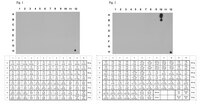MDC1 cleavage by caspase-3: a novel mechanism for inactivating the DNA damage response during apoptosis.
Solier, S; Pommier, Y
Cancer research
71
906-13
2011
Show Abstract
Recently, we identified the "apoptotic ring," containing phosphorylated histone H2AX (γ-H2AX), as an early chromatin modification during apoptosis. Because γ-H2AX initiates the DNA damage response (DDR), we tested whether the apoptotic H2AX response leads to the full recruitment of the DDR factors that normally coordinate DNA repair and cell-cycle checkpoints. We show that the apoptotic H2AX response does not recruit the DDR factors because MDC1 (mediator of DNA damage checkpoint protein 1), which normally binds to γ-H2AX in response to DNA damage and amplifies the DDR, is cleaved by caspase-3. This cleavage separates the BRCT and FHA domains of MDC1 and constitutes a novel mechanism for the inactivation of DNA repair in apoptotic cells. Also, we show that downregulation of MDC1 increases the apoptotic response to TRAIL. Together, these results implicate MDC1 in the cellular apoptotic response. Full Text Article | 21148072
 |
WSTF regulates the H2A.X DNA damage response via a novel tyrosine kinase activity.
Xiao, A; Li, H; Shechter, D; Ahn, SH; Fabrizio, LA; Erdjument-Bromage, H; Ishibe-Murakami, S; Wang, B; Tempst, P; Hofmann, K; Patel, DJ; Elledge, SJ; Allis, CD
Nature
457
57-62
2009
Show Abstract
DNA double-stranded breaks present a serious challenge for eukaryotic cells. The inability to repair breaks leads to genomic instability, carcinogenesis and cell death. During the double-strand break response, mammalian chromatin undergoes reorganization demarcated by H2A.X Ser 139 phosphorylation (gamma-H2A.X). However, the regulation of gamma-H2A.X phosphorylation and its precise role in chromatin remodelling during the repair process remain unclear. Here we report a new regulatory mechanism mediated by WSTF (Williams-Beuren syndrome transcription factor, also known as BAZ1B)-a component of the WICH complex (WSTF-ISWI ATP-dependent chromatin-remodelling complex). We show that WSTF has intrinsic tyrosine kinase activity by means of a domain that shares no sequence homology to any known kinase fold. We show that WSTF phosphorylates Tyr 142 of H2A.X, and that WSTF activity has an important role in regulating several events that are critical for the DNA damage response. Our work demonstrates a new mechanism that regulates the DNA damage response and expands our knowledge of domains that contain intrinsic tyrosine kinase activity. | 19092802
 |











